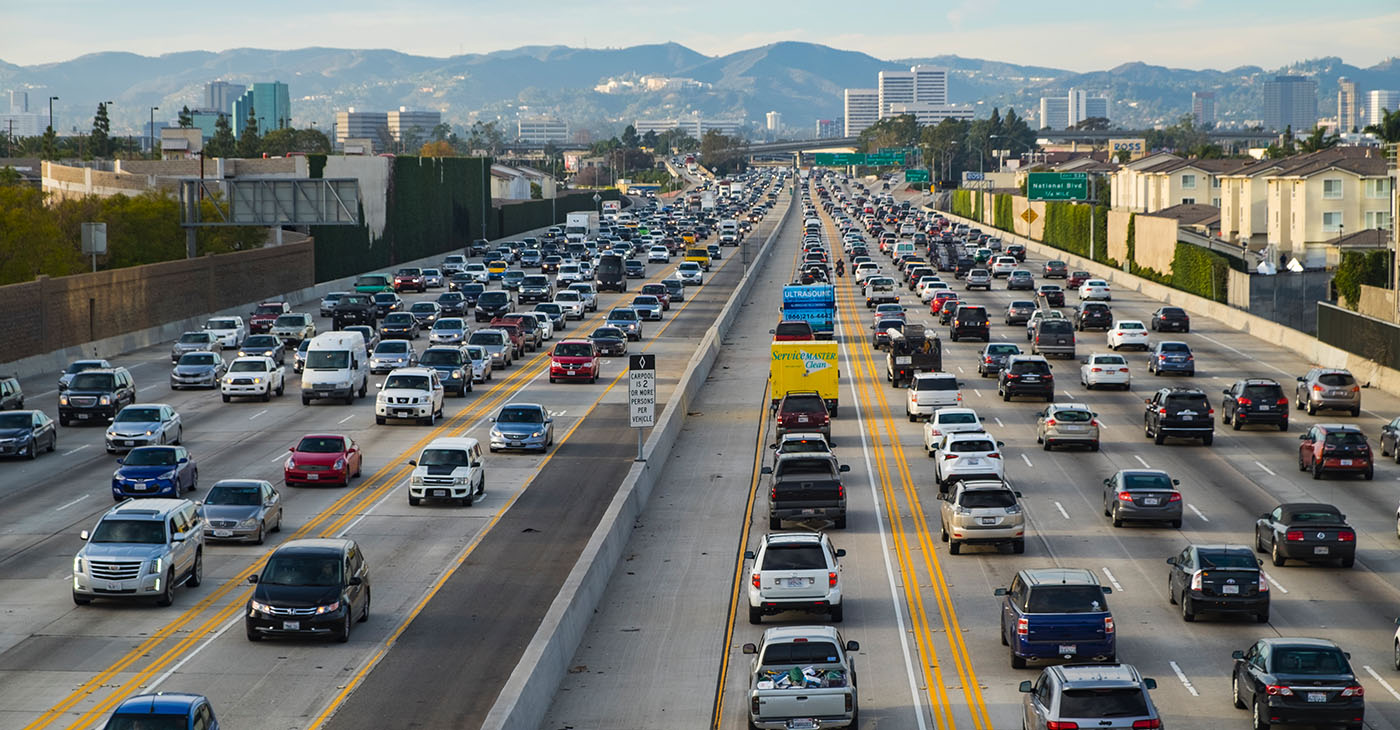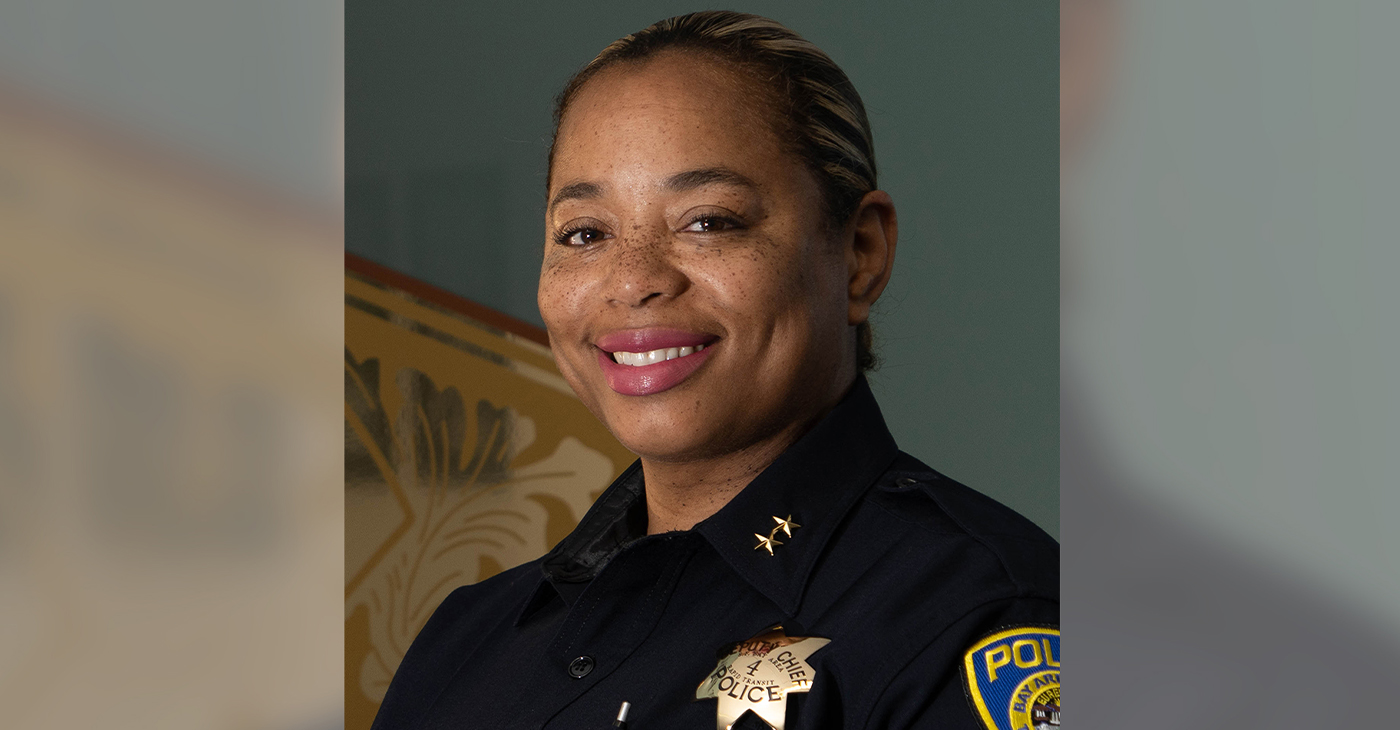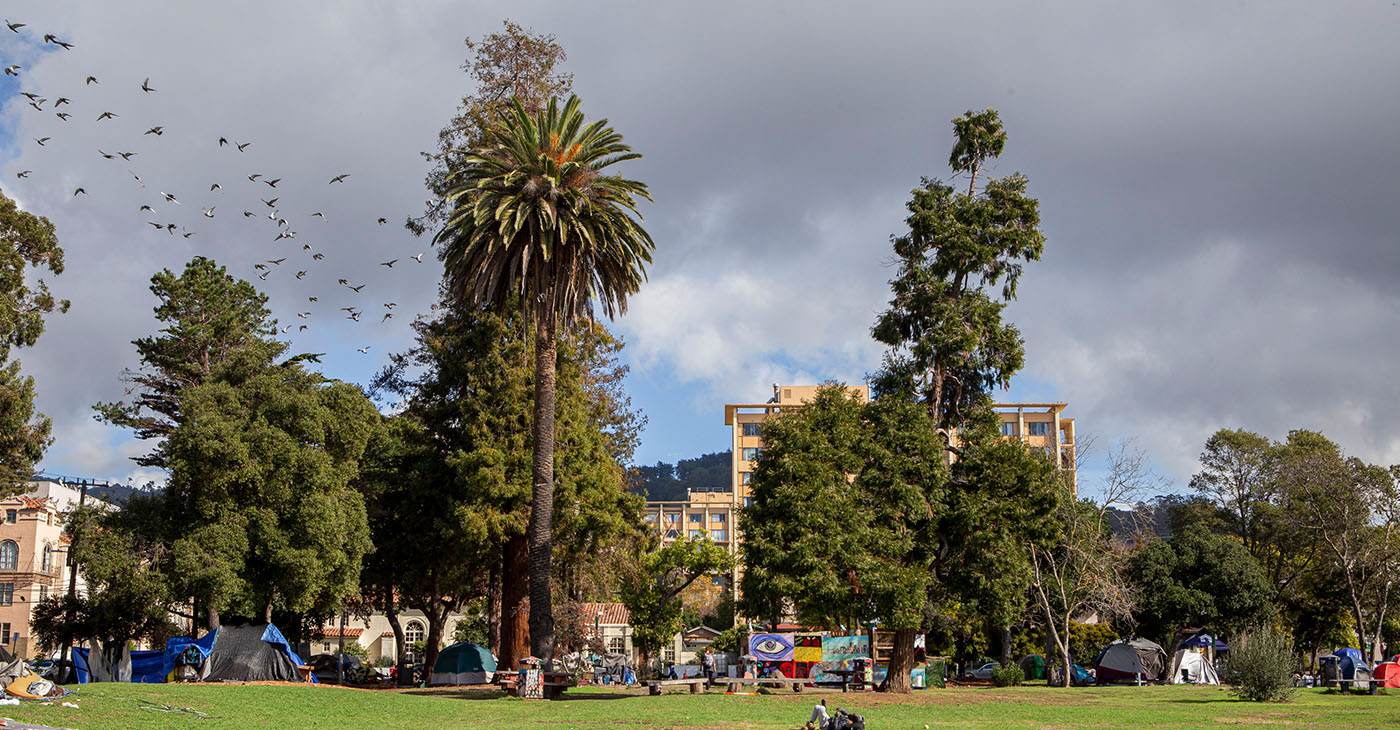BayCityNews
Undoing the Past: Lawmakers Seek to Mend California Neighborhoods Sliced by Highways
A new select committee in the California Legislature will explore ways the state can reconnect neighborhoods that decades ago were torn apart by interstates and highways. During the nation’s interstate highway construction boom in the 1950s and ’60s, numerous urban neighborhoods were sliced through, often isolating residential areas largely populated by minorities and low-income residents from surrounding communities — and from economic opportunity.

By Wendy Fry
CalMatters
A new select committee in the California Legislature will explore ways the state can reconnect neighborhoods that decades ago were torn apart by interstates and highways.
During the nation’s interstate highway construction boom in the 1950s and ’60s, numerous urban neighborhoods were sliced through, often isolating residential areas largely populated by minorities and low-income residents from surrounding communities — and from economic opportunity.
More than 1 million people lost their homes, researchers have estimated. Federal transportation officials noted that in the first 20 years after the 1957 Federal Highway Aid Act launched nationwide highway construction, more than 475,000 households were displaced.
Now local and state governments across the nation are exploring ways to undo some of that harm by finding ways to re-link some of those neighborhoods. On Thursday, California’s Assembly Speaker Anthony Rendon appointed Assemblymember David Alvarez, a Democrat from San Diego, to chair a new Select Committee on Reconnecting Communities.
“Many communities, like Logan Heights and Sherman Heights, were devastated by the superhighway system,” Alvarez said in an interview, referring to San Diego neighborhoods. “I intend to focus the committee’s work on reconnecting neighbors and creating new opportunities, like park space and affordable housing.”
Roadways vs neighborhoods
While the superhighway system connected cities and metro areas across the nation, allowing drivers and shippers to more efficiently traverse the country, communities of color and other under-resourced neighborhoods experienced fewer of the benefits from that system — such as interstate exits and transit hubs — while suffering the greatest harm, including isolation from job centers, more air pollution and the devastation of local business areas, experts say.
Gustavo Dallarda, Caltrans district director for San Diego and Imperial counties, said the state transportation agency is seeking new ways to make transportation part of the community “rather than something that runs through it.”
“Caltrans is evolving from prioritizing transportation efficiency to a people-first organization,” he said in an interview. “We have a heightened awareness of the impact our infrastructure has had on communities throughout the state … including those in underserved neighborhoods.”
Federal money is on its way. U.S. Sen. Alex Padilla on Tuesday announced California will receive nearly $36 million from a pilot program aimed at reconnecting communities on a national level.
The federal program will fund planning, design, demolition, and reconstruction of street grids, parks and other infrastructure to reconnect communities divided by transportation infrastructure.
Removing barriers
Projects already slated for federal funding include:
- $30 million for the City of Long Beach to reconfigure West Shoreline Drive to remove a roadway barrier and improve access and connectivity between Downtown Long Beach and a public open space;
- $2 million to the City of Pasadena for future redevelopment of the I-710;
- $2 million to the City of San Jose to convert Monterey Road from a motor highway to a “grand” boulevard with dedicated bike lanes and “urban greening.”;
- $680,000 for a Caltrans Project in Oakland to explore alternatives for reconnecting communities along the I-980 corridor;
- $600,000 to the City of Fresno for a pedestrian bridge that would cross California State Route 99 and connect Parkway Drive and Roeding Park.
Across the nation, some cities are considering ripping up parts of aging highway systems to make room for open spaces to reconnect once-separated neighborhoods. In California, state officials said they are looking for ways to reconnect neighborhoods by building parks and community spaces along freeways.
Activists nationwide are urging that such plans include input from the community members most affected.
“The benefits unlocked by taking down an expressway must be channeled to the members of the current community. As more and more state and local agencies take up these projects, it is essential that they achieve the best possible outcomes,” according to Congress for the New Urbanism, a national nonprofit group.
In San Diego a groundbreaking in early March will provide an example. The project will become a community space and park along Interstate 5 at Boston Avenue, in the Barrio Logan neighborhood. The mostly Latino community is already known for its extensive collection of large Chicano murals painted on pillars of the Coronado Bridge, which bisects a key community park.
In coming months, the state’s new select committee will hold public informational hearings in San Francisco, Los Angeles, and San Diego to discuss how local and national actions damaged communities. The committee will use these hearings to develop legislative and budget proposals to address systemic injustices and inequality, according to Alvarez’s office.
Copyright © 2023 Bay City News, Inc. All rights reserved. Republication, rebroadcast or redistribution without the express written consent of Bay City News, Inc. is prohibited. Bay City News is a 24/7 news service covering the greater Bay Area.
###
WendyFry/CalMatters0735a03/01/23
EDITORS PLEASE NOTE: This story was originally published by CalMatters. Please use the original link when sharing: https://calmatters.org/california-divide/2023/02/reconnecting-communities/
/www/bcn/general/03/newsclip.23.03.01.07.38.01.1.txt
BayCityNews
SAN LEANDRO: INTERIM POLICE CHIEF APPOINTED TO PERMANENT ROLE

SAN LEANDRO POLICE CHIEF
By Bay City News
Angela Averiett has been appointed to serve as the next police chief of San Leandro.
Prior to her previous role as interim police chief in San Leandro, Averiett served as the police chief in Los Altos.
“Chief Averiett is a well-respected law enforcement veteran, who is an advocate for diversity, inclusion, and community building,” said City Manager Fran Robustelli.
Averiett is also part of The Curve, an organization that gives leaders in policing the most current and creative ideas about leadership and the resources to implement them so they can more “effectively modernize their cultures from the inside-out.”
Averiett stated, “It is an honor to be gifted the chance to serve the dedicated women and men of the San Leandro Police Department and the rich, diverse group of San Leandrans.”
Copyright © 2024 Bay City News, Inc. All rights reserved. Republication, rebroadcast or redistribution without the express written consent of Bay City News, Inc. is prohibited. Bay City News is a 24/7 news service covering the greater Bay Area.
###
ShreyaKomar 1149a06/04/2
CONTACT: Sonia Lee (650) 947-2611 or slee@losaltosca.gov
Bay Area
Arrests Made at People’s Park as Preparations For Construction on Site Begin Again
Seven people were arrested early Thursday morning at Berkeley’s People’s Park as fencing was put up in preparation for a controversial construction project to build housing for students and formerly unhoused people on the public park.

By Bay City News
Seven people were arrested early Thursday morning at Berkeley’s People’s Park as fencing was put up in preparation for a controversial construction project to build housing for students and formerly unhoused people on the public park.
Fencing and double-stacked shipping containers will continue to be installed over the next three to four days and surrounding streets will be closed off for about six days, according to a university spokesperson.
Opponents fought the University of California, Berkeley’s plan to build on the site when construction began in August 2022, but they were dealt a setback when Gov. Gavin Newsom signed a bill last year that was unanimously backed by the state Legislature to exempt the university from a requirement to consider alternative sites for the project.
The arrests Thursday morning were for trespassing, with two also arrested for failure to disperse, according to the university. They were cited and released after being booked into jail.
An appeal on the university’s construction project is still being heard by the state Supreme Court, but the university said it has the legal right to close off the construction zone while the case is litigated.
“Given that the existing legal issues will inevitably be resolved, we decided to take this necessary step now in order to minimize disruption for the public and our students when we are eventually cleared to resume construction,” UC Berkeley Chancellor Carol Christ said in a statement.
“Unfortunately, our planning and actions must take into account that some of the project’s opponents have previously resorted to violence and vandalism, despite strong support for the project on the part of students, community members, advocates for unhoused people, the elected leadership of the City of Berkeley, as well as the Legislature and governor of the state of California,” Christ said.
The plan calls for building housing for 1,100 students and a separate building with 100 apartments for low-income, formerly unhoused people, but activists have fought against the displacement of unhoused people currently living in the park and development on a green space.
The plan would preserve 60% of the 2.8-acre park’s green space and the park would remain open to the public. People living in the park have been offered transitional housing.
Video posted to social media showed trees being cut down and carried by heavy machinery overnight Wednesday into Thursday morning.
Copyright © 2024 Bay City News, Inc. All rights reserved. Republication, rebroadcast or redistribution without the express written consent of Bay City News, Inc. is prohibited. Bay City News is a 24/7 news service covering the greater Bay Area.
Bay Area
Appeals Court Denies Request to Revisit Berkeley’s Natural Gas Ban
The U.S. Court of Appeals for the 9th Circuit has ruled against Berkeley’s pioneering natural gas ban. In a majority decision filed Tuesday, the court said Berkeley’s ordinance banning gas pipelines in new construction runs afoul of the federal Energy Policy and Conservation Act.

By Kiley Russell
Bay City News
The U.S. Court of Appeals for the 9th Circuit has ruled against Berkeley’s pioneering natural gas ban.
In a majority decision filed Tuesday, the court said Berkeley’s ordinance banning gas pipelines in new construction runs afoul of the federal Energy Policy and Conservation Act.
The act “expressly preempts state and local regulations concerning the energy use of many natural gas appliances, including those used in household and restaurant kitchens,” Judge Patrick Bumatay wrote in the majority opinion.
“Instead of directly banning those appliances in new buildings, Berkeley took a more circuitous route to the same result,” Bumatay wrote. “It enacted a building code that prohibits natural gas piping in those buildings from the point of delivery at a gas meter, rendering the gas appliances useless.”
The Berkeley City Council unanimously approved the first-of-its-kind ordinance in July 2019.
It was designed to combat climate change by reducing natural gas emissions throughout the city by encouraging the use of more ecologically friendly electrical hookups.
“Climate change is an existential threat to our city, our homes, and our future,” Councilmember Kate Harrison, who authored the ordinance, said at the time. “It is time to take aggressive action to reduce our emissions across all sectors.”
The California Restaurant Association sued the city in November 2019, and in 2021 a lower court ruled against the restaurant organization.
In that ruling, the court found that the local ordinance didn’t conflict with federal regulations because it indirectly applied to appliances covered by federal law and that the federal rules should be interpreted so as not to “sweep into areas that are historically the province of state and local regulation.”
Last year, a panel of the 9th Circuit disagreed and ruled that federal law preempted the city’s new ordinance and on Tuesday, the full panel of judges denied a request to rehear the case.
Judge Michelle Friedland, writing the dissenting opinion for the 9th Circuit, said the majority opinion “misinterprets the statute’s key terms” and “needlessly blocks Berkeley’s effort to combat climate change, along with the equivalent laws passed by other local governments. Our system of federalism requires much more respect for state and local autonomy.”
Copyright © 2024 Bay City News, Inc. All rights reserved. Republication, rebroadcast or redistribution without the express written consent of Bay City News, Inc. is prohibited. Bay City News is a 24/7 news service covering the greater Bay Area.
-

 #NNPA BlackPress3 weeks ago
#NNPA BlackPress3 weeks agoMLK Bust Quietly Removed from Oval Office Under Trump
-

 Activism3 weeks ago
Activism3 weeks agoOakland Post: Week of May 7 – 13, 2025
-

 Activism4 weeks ago
Activism4 weeks agoOakland Post: Week of April 30 – May 6, 2025
-

 #NNPA BlackPress3 weeks ago
#NNPA BlackPress3 weeks agoTrump Abruptly Fires First Carla Hayden: The First Black Woman to Serve as Librarian of Congress
-

 Activism2 weeks ago
Activism2 weeks agoNew Oakland Moving Forward
-

 Activism2 weeks ago
Activism2 weeks agoAfter Two Decades, Oakland Unified Will Finally Regain Local Control
-

 Activism2 weeks ago
Activism2 weeks agoOakland Post: Week of May 14 – 20, 2025
-

 #NNPA BlackPress3 weeks ago
#NNPA BlackPress3 weeks agoBlack America Celebrates African Descent Heritage of Pope Leo XIV


















































